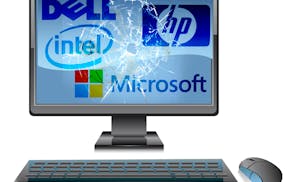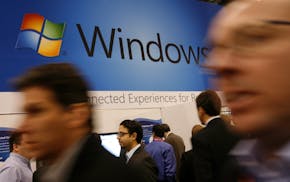If you are tired of Windows 8 and 8.1, which pointlessly forced on consumers a touch-screen interface when most PCs lacked touch screens, take heart.
Even Microsoft has figured out that Windows 8 is a flop and plans to replace it by 2015, or, given the pending management change at the company, perhaps earlier. While Microsoft hasn't announced this yet, it is being reported by tech website zdnet.com based on conversations with unnamed sources inside Microsoft.
It appears that Microsoft is developing new versions of Windows that will return most PCs to the traditional Windows user interface that relies on a mouse and keyboard. The touch-screen Windows 8 and 8.1 interface will be limited to tablet computers and smartphones, which is where it belonged in the first place. For details, see tinyurl.com/k6rfog8.
A return to traditional Windows is good news for millions of consumers who have been vexed by Windows 8, and for a PC industry that has watched shipments fall more than 10 percent this year, partly because Windows 8 and 8.1 gave consumers no reason to buy a new computer.
"The entire point of Windows 8 was to ignite demand within the PC market and make people want to replace their older systems with new touch-enabled PCs that would slow the growth of [Apple] iOS and [Google] Android as rival mobile computing platforms," said tech news website BGR Media (see tinyurl.com/kag9ugf.) "That simply isn't happening."
Or, as research firm International Data Corp. said in its December forecast, "Perhaps the chief concern for future PC demand is a lack of reasons to replace an older system."
Q: My new laptop with Windows 8.1 and the Internet Explorer 11 browser won't let me access the Medicare website, mymedicare.gov, even though my old computer with Windows 7 and Internet Explorer 10 had no problem with it. Best Buy told me that the browser probably isn't compatible with the website and suggested I use the Google Chrome browser instead. What's wrong?
Robert Ackerman, Niles, Mich.
A: You're not the first person to have this problem. But Microsoft says it can be fixed by changing the settings in Internet Explorer 11.
Go to the browser's "Tools" heading, and from the drop-down menu choose "Internet Options." Click the "Advanced" tab. Uncheck the boxes in front of "Enable Enhanced Protected Mode," "Enable SmartScreen Filter" and "Use TLS 1.1," then restart your PC to activate the changes.
For a visual aid, go to tinyurl.com/mrsntjw and look at the screen shot of the Internet Options menu. Be sure your browser menu has exactly the same boxes checked and unchecked. Note that the red arrows on the left show which boxes must be UNCHECKED to solve the problem.
E-mail tech questions to steve.j.alexander@
gmail.com or write to Tech Q&A, 425 Portland Av. S., Minneapolis, MN 55488. Include name, city and phone number.

Alexander: A beeping computer is telling you what's gone wrong inside

Alexander: How to stop deleted iPhone e-mails from coming back

Alexander: Refurbished PCs may need a BIOS update to use new components

Alexander: Windows 11 not always to blame for browser or e-mail problems


